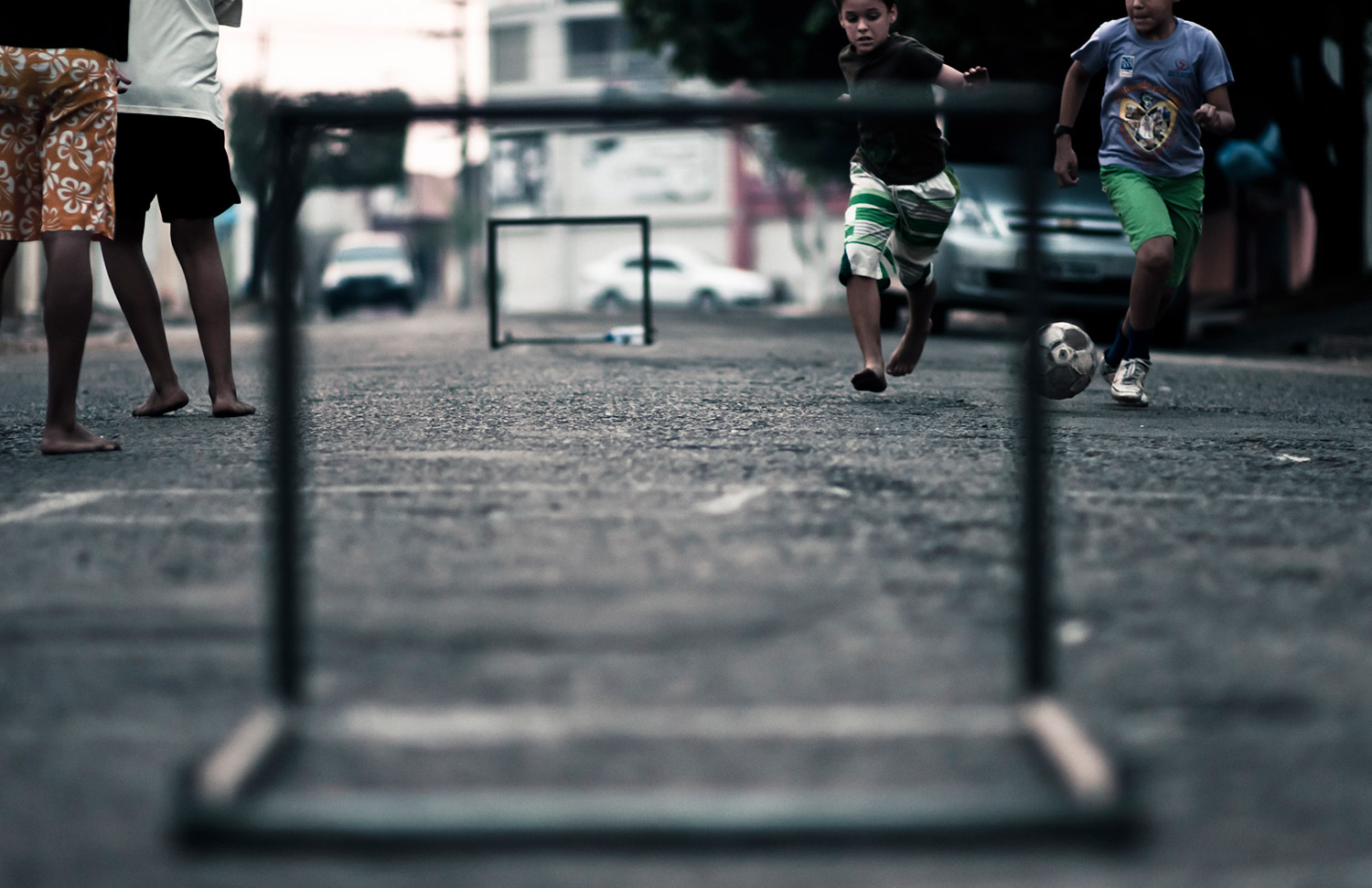There’s nothing better than street ball on a sunny day. Growing up, I would always invite friends to play on the road next to my house. We would set up goals with our backpacks and just scrimmage for hours. All the kids from the surrounding apartment buildings would join, and we would go non-stop. I was first inspired to play by my father, who grew up in the Soviet Union. And the more I practiced with my friends, the better I got, and the higher my confidence became.

Today, as the coach of a U-12 boys team in San Fernando Valley, one of the biggest things I look for in a player is how much time he spends working outside of practice. And more specifically, how much time he spends playing street ball or even on an indoor field. This, I believe, is one of the most crucial approaches to skill development. There is no better way to improve than actually playing, which is why I recently introduced my boys team, Barcelona California, to one of L.A.’s favorite outdoor futsal courts at Hawthorne Memorial Park.
When I play street ball, everything is moving at a million miles an hour. I need to make decisions before the ball is even passed to me. I have to be creative when passing defenders. I have to be unique and hard to read.
My U-12 boys team showing off some serious skill on the futsal court:
When we compare full field and street ball, we find many concepts from the short-sided game—like ball movement, ball control, and vision—translate onto the big field. When I play street ball, everything is moving at a million miles an hour. I need to make decisions before the ball is even passed to me. I have to be creative when passing defenders. I have to be unique and hard to read. I need to make sure every touch is perfect so I don’t cause a turnover.
These are all skills that are needed on the full pitch. The difference, however, is time. Switching the ball on a full field with a big cross, for example, gives players time to control the ball and make a decision before the defensive line transitions to the other side. In futsal, every time a pass is made, you can expect an opponent to be instantly in your face. Every microsecond and touch counts, making futsalers supremely sharp decision-makers with superb ball control.
One of the best exercises to do is to set up random cones on the street. Pretend these cones are defenders and practice random moves to try and beat them.
When developing young players, I emphasize these techniques I know will make them better ball handlers and smarter on the field. In practice, I like to set up a long rectangle of cones to work the inside, outside, and soles of the feet. Working with all different parts of the foot is extremely important. I also like to teach the boys feints and body fakes, which make a player much harder to read. One of the best exercises to do is to set up random cones on the street. Pretend these cones are defenders and practice random moves to try and beat them.
Today, in SoCal, you can still find players on the block playing from sunrise to sunset. The most important thing about street ball is not the creativity or technical skills developed, it’s the fact that a young kid can enjoy playing the best sport in the world on any terrain. It’s the smiles that come from nutmegs and breaking a defender’s ankles that make it fun. Soccer would never be what it is today if there was no street ball. It’s where passion for the game is fueled and where love for the game is born.









[…] Download Image More @ urbanpitch.com […]